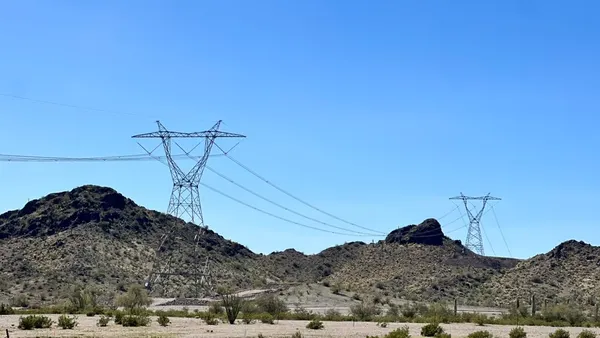Dive Brief:
- The grid operator for most of Texas expects there will be sufficient generation to meet peak loads this summer, but on Thursday detailed three low-probability scenarios where extreme weather could lead to blackouts.
- The new level of detail on scenarios with a 1% chance of occurring is an attempt by the Electric Reliability Council of Texas (ERCOT) to "restore trust" following February's winter grid collapse and communication failures, according to Warren Lasher, senior director of system planning.
- ERCOT is bracing for record-breaking electric demand this summer, officials said, due to anticipated heat as well as population and economic growth in the state. But the grid heads into the warmest months with a 15.7% reserve margin, only slightly below the ideal level, they added.
Dive Insight:
ERCOT media briefings around its seasonal resource assessments tend to be pretty mild events, but Thursday's Q&A opened with local reporters asking for more detail on how the reliability scenarios are developed and why consumers should have faith in their accuracy.
"Why should we believe you now?" a Houston reporter asked.
In February, millions of Texans were left without power as record cold weather sent demand soaring and many generators were unable to produce power. ERCOT board Chair Sally Talberg and other members resigned in the wake of the disaster.
"We recognize that we failed to communicate what the potential risks were, going into the winter season," Lasher said. "These extreme scenarios have been specifically added to restore the trust in ERCOT's ability to assess and communicate the risks."
ERCOT's system-wide peak demand record 74,820 MW was set in August 2019. The grid operator's latest analysis shows there will be sufficient generation available to meet the expected summer 2021 peak demand of 77,144 MW. Heading into last summer, ERCOT was expecting peak load of 75,200 MW, even as COVID-19 was suppressing some demand.
ERCOT's summer Seasonal Assessment of Resource Adequacy concludes the grid operator can meet peak demand with normal operations in three of four primary scenarios, and in the fourth would need to call for conservation.
The grid operator's three additional, unlikely, extreme summer scenarios which could lead to blackouts, include extended hot weather that results in high demand, a spate of thermal generator outages in late summer, and a shortage of wind and solar generation.
"While they are all within the realm of possibility, the grid operator believes there is a less than one percent chance that they would actually occur," ERCOT said in a statement, adding that February's events were "approximately a one-in-100 event."
ERCOT's reserve margin has been increasing for years, following the retirement of several large coal plants. The summer 2020 reserve margin was 12.6%.
"There has been significant investment in new generation resources," Lasher said, including new solar, gas and wind projects. And, he added, this has happened as the state's peak demand has risen.
ERCOT also issued its Capacity, Demand and Reserves Report, which provides a long-term view of resource adequacy on the system.
"We expect to see increasing reserve margins over the next few years, most notably due to significant interest in developing solar resources," said Lasher. "We also see significant interest in battery resource development, but we currently do not count capacity from batteries in these reports."
That is because there is not currently enough historical data for ERCOT to be confident with battery performance, Lasher said.














